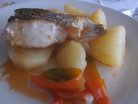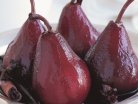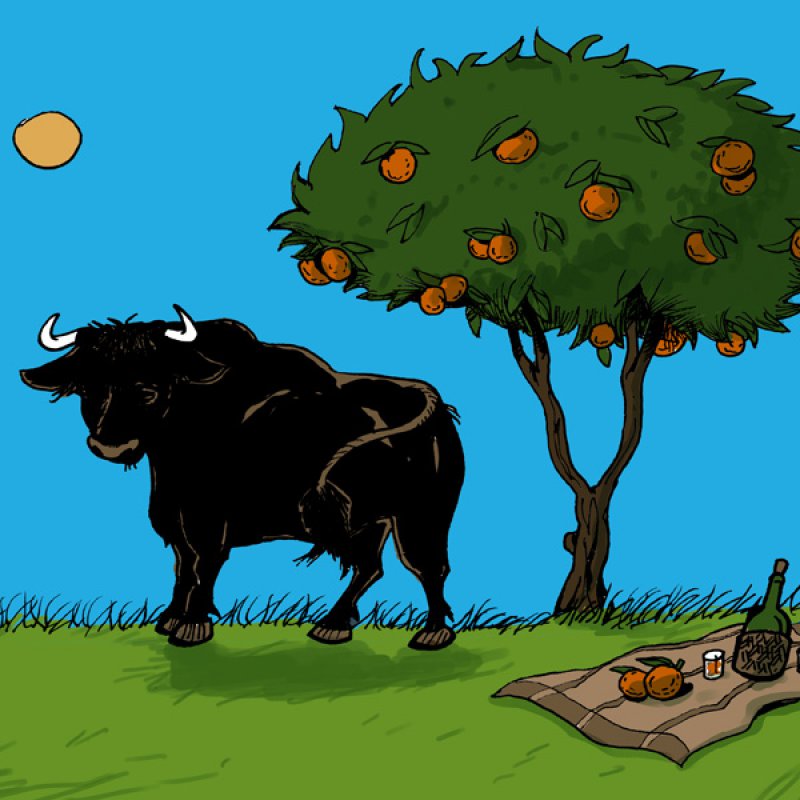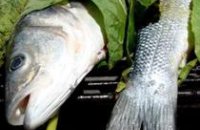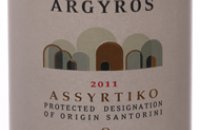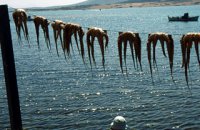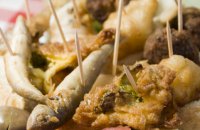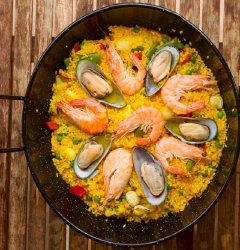Usually when we hear "Spanish cuisine" we automatically think of paella, that well-known delicious rice dish that usually involves seafood, chicken, beans, peas, and peppers, among many other regional variations. However, the idea of a national dish creates the impression of a national cuisine- a conception that is far from accurate. With Spain consisting of seventeen independent regions and fifty provinces, Spanish cuisine is really a strange amalgamation of regional cuisines.
When creatively mixed and blended, these tastes and the various gastronomical habits create, in the end, a particularly imaginative cuisine. Perhaps the common elements that unite the diverse regions are limited to olive oil and garlic.
The particular position of each area within the country’s boundaries determines its inhabitants access to sea, rivers, or plains, along with its climate, and its interaction with the various civilizations that surround Spain, or have surrounded Spain, over the centuries. Each of these factors have, in turn, influenced the culinary habits of each particular region. In other words, the incredible diversity of the Spanish terrain has given rise to an incredibly diverse cuisine. In order to describe the various regional cuisines, we will divide country geographically into northern, central, Mediterranean, southern, and island regions.
Northern Spain: Here, we meet the Basque community, the provinces of Asturias, Cantabria, and Galicia, in addition to the wider area of the Ebro river with Aragon, La Rioja and Navarre.
The damp climate, along with the access to either river or sea that most settlements in this region enjoy, allows for a multitude of dishes based on fish and seafood. In fact, this region produces the greatest quantities of salmon in all of Spain. Similarly, the region is known for its production of the cheese Cabrales (Asturias) with an intense taste, along with its myriad dairy products (Cantabria). The areas near the Ebro are known for their high-quality fruit and vegetable yields, while the entire region is known for its seafood.
The Basque community is renowned worldwide for its haute cuisine, with anchovies, cod, trout, beef, and game forming the base of the region’s diet. Succulent stews and sauces characterize the local cuisine, while traditional dishes include bacalao a la vizcaina (cod, dried peppers and onions – Basque), fabada (boiled with dry beans and pork – Asturias) and lacón con grelos (boiled ham with turnip leaves – Galicia). Other popular delicacies include la trucha a la navarra (fried trout with a slice of ham in the middle – Navarre) and the sweet quesada, a combination of fresh cheese, honey and butter.
Mediterranean Spain: This region of Spain is comprised almost exclusively of the Catalonia area.
Like the Basque community, Catalonia is esteemed across the globe for its sophisticated cuisine. Due to the influence of both France and Italy, Catalonia cooking is based on fresh high-quality ingredients. As the uncontested queen of rice, the city of Valencia is the birthplace of the famous paella. On the coast of Mediterranean Spain, we find that the dishes are dominated by fish and seafood. As we move inland, we find that the local cuisine becomes characterized by grilled meat, poultry, game, and soups.
The main dishes of inland Catalonia are based on four sauces in particular: sofrito, samfaina, picada and ali-oli. A few of the most interesting recipes of this region are: escudella (meat stock with pasta, which are usually accompanied by carn d’ olla, a hearty stew – Barcelona), mar y cel (sausages, rabbit, shrimps and fish all mixed – Girona), and manestra (vegetable stew – Murcia).
Central Spain: Here, grilled dishes, primarily the famous Iberian pork, play the leading role. This dish is known for its unique taste and aroma, a result of the animal’s diet on wild greens throughout the year. The severe climate has led to a cuisine based on meat (pork, as mentioned, along with lamb, goat and game), legumes, and wild vegetables (mushrooms, leeks etc.). Legumes dominate particularly in Castile and Leon, though Castile is known to be the queen of bread. The city of Estremadura is the queen of pork, while the cuisine of La Mancha is especially heavy, as its residents maintain the old food habits of shepherds. The region’s characteristic dishes include: la caldereta (boiled goat – Estremadura), cocido madrileño (a hearty stew where the stock is served first and then the meat, chickpeas, potatoes and the greens –Madrid), and morteruelos (finely chopped pork liver sautéed with seasonings and bread crumbs –La Mancha). The Moorish influence is still felt in the region as a result of the sweets that it produces, such as the exceptional marzipan of Toledo.
Southern Spain (Andalusia): Here, the culinary tradition has resulted from the region’s interaction with the surrounding cultures. The region is known for its delicious sweets, most of which are the product of Arabic influence. The coastal area subscribes to a diet quite similar to that of Mediterranean Spain, while the inland region is characterized by its dishes based on pork and ham, as well as its winter stews. Yet another characterizing feature of the region is its fried foods. The city of Andalusia produces the best ham in the country and is also known as the birthplace of gazpacho. Gazpacho is a cold soup, made in hundreds of variations, but the main recipe consists of bread, garlic, water, tomato and often cucumber and pepper. Moreover, the tradition of tapas, or the shared appetizers similar to Greek mezedes, is attributed to Seville. Tapas dishes can be based on shrimp, pork, eggs, and vegetables, along with a variety of other ingredients, and usually accompanied by wine, sherry, or beer.
The Islands: The Spanish islands include the Balearic in the Mediterranean and the Canary in the Atlantic sea. The Balearic Islands, aside from their famous mayonnaise, are known for their fluffy sweets called ensaimadas. Their other specialties are based on green vegetables, fish, and pork, but the most beloved of all the region’s dishes is its sumptuous soup. The Canary Islands are known for their production of high quality bananas and tomatoes, but these ingredients do not characterize the dishes of that cuisine. Influenced by those of Castile, Estremadura, and Andalusia, the cuisine of the Canary Islands is known for its stews and hot spices. The native people, the Guanches, are famous for two particular dishes: the puchero canario (a popular stew made from fish, potatoes, and other local products, such as pumpkin) and el mojo (a dressing that accompanies almost all of the region’s dishes), consisting of oil, vinegar, garlic, salt, and various other spices like paprika and hot pepper.
Spanish Cuisine as an Amalgamation of the Regions
The great diversity of the Spanish terrain has given rise to an incredibly diverse cuisine. When creatively mixed and blended, the disparate regional tastes and flavors, along with the various gastronomical habits create, in the end, a particularly imaginative cuisine.
Country:
Related Articles
Most Popular recipes


























